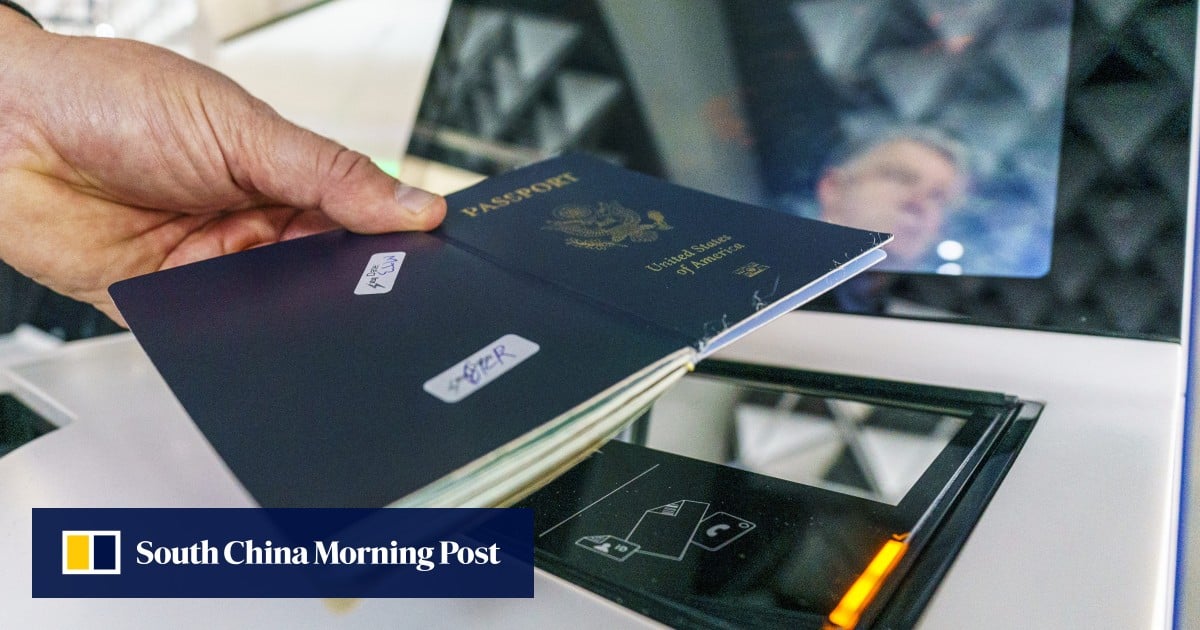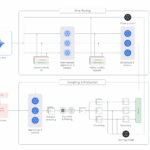Some experts anticipate the potential application of existing web-based booking systems to various airport functions. For instance, in certain American flights, passengers can already schedule a specific time slot for passing through security.

At Hangzhou’s Terminal T4 in Xiaoshan International Airport, a customer utilizes visual recognition technology.
There are also predictions about the widespread adoption of innovative technologies currently under testing. This includes integrating artificial intelligence (AI) into carry-on baggage screening to enhance speed and accuracy.
While some futuristic airport visions resemble scenes from “Back to the Future II” in 1989, portraying airports as amusement parks offering endless entertainment and services like robot-made beverages and multilingual assistance, the reality may be different.
Imagine embarking on a culinary journey from Istanbul to Bordeaux and then to Kobe. It’s intriguing to consider how different our transportation methods might be if the predictions from that movie had materialized.
Nevertheless, the consensus is clear that the ideal scenario involves seamless passenger flow from the airport to the boarding gate with minimal waiting time.
According to Nick Careen, the Senior Vice President for Operations, Health, and Security at IATA, achieving this seamless travel experience necessitates the advanced implementation of biometrics with widespread acceptance.
Already in use at Hong Kong International Airport, biometric e-boarding gates based on facial recognition technology streamline the authentication process. Similarly, customs offices in North America and Ireland leverage this technology to expedite verification procedures.
In the envisioned future, your digital identity stored on your mobile device will facilitate airport check-ins, with facial recognition cameras automatically confirming your presence upon arrival.

For instance, at Frankfurt Airport in Germany, a check-in system reads biological data encoded on a card. This streamlined process guides passengers through each checkpoint, verifying their identity at every stage.
Douglas Carlucci, the head of Asia-Pacific transportation and services at Oliver Wyman, envisions a future where AI-powered cameras monitor security areas, potentially eliminating the need for security gates altogether, allowing only unidentified individuals to be halted.
While the technology exists and installation costs are a consideration, initial expenses may be offset by reduced staffing needs and enhanced operational efficiency.
The primary challenge lies in aligning security protocols with evolving technological capabilities, a discrepancy evident within and across airports globally.

Nick Careen highlights the discord between security protocols and operational practices, emphasizing the need for harmonization. He advocates for leveraging outbound travel data to streamline return trip processing, foreseeing the benefits of data-driven insights in expediting passenger flows.
In the face of projected passenger growth, expanding terminals and increasing personnel seem unsustainable. A universally accepted digital identification system is seen as a viable solution by Careen, promising improved space utilization and operational efficiency with fewer staff.
While encoding genetic data in passports and implementing biometric authentication are steps in the right direction, achieving seamless passenger processing across borders remains a complex challenge.

The future of online identities may encompass comprehensive flight-specific data, including immigration records, vaccination history, ticket details, and baggage information, all in a paperless format.
Efforts to streamline travel experiences include electronic baggage tags that store essential customer information, potentially paving the way for efficient door-to-door luggage delivery services.
Despite technological advancements, regulatory compliance and security concerns pose hurdles to widespread adoption, particularly in transitioning from traditional paper tags to digital alternatives.
Facial recognition technology and biometric data hold promise in expediting passenger flows, yet regulatory barriers must be addressed to realize their full potential in eliminating distinctions between domestic and international travelers.

While advancements like digital baggage tags and AI-driven scanning systems exist, challenges persist in aligning existing infrastructure with evolving technologies and regulatory frameworks.
The transition to digital solutions faces resistance due to established safety regulations mandating physical luggage presence during travel.
Efforts to streamline passenger processing through biometric data and facial recognition technologies encounter regulatory obstacles, hindering progress towards a seamless travel experience.
Despite the potential benefits of these innovations, the industry must navigate regulatory complexities and operational constraints to realize their full impact on passenger facilitation.

Advancements in AI-driven scanning technologies offer the potential for expedited security checks and reduced manual interventions, enhancing the efficiency of passenger screening processes.
While these innovations hold promise for accelerating air travel, challenges remain in balancing speed and convenience with regulatory compliance and operational constraints.
As the industry evolves to meet changing passenger expectations, airports and airlines must adapt to the shifting landscape by embracing technological advancements and optimizing passenger experiences through digital solutions and streamlined processes.






